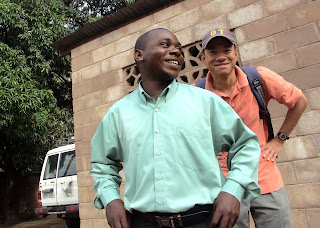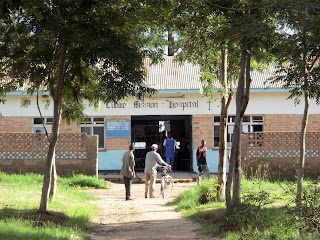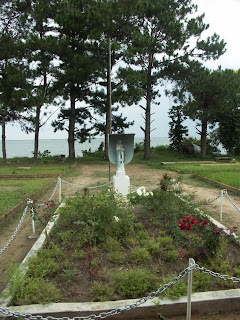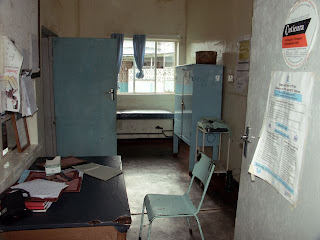It is a beautiful day with bright sun and blue sky – the first time the weather has been this nice since I came to Lubwe. The afternoon is slow; the male ward is almost empty. I head home early and decide to go for a run. It has been a long time since I last did any kind of running and I can already feel my legs atrophying.
I run out of the village, down the main road toward the next village, then turn back toward the market. Along the way, people stare at me as if asking why would anyone go running for no reason. Having gotten used to the staring by now, I give an occasional wave to them.
On my way back, I pass by the hospital again. People are loading packs of things onto a flatbed truck parked in front. Ms. K., the medical licentiate calls out to me. It turns out that there are two women who need emergency cesarean sections. Because the part that was needed to fix the autoclave has not arrived, there are no sterile instruments available here. The women will have to be transported to
I quickly change out of my sweaty T-shirt. The two women lay down on two thin foam mattresses on the back of the flatbed truck. Two nurses jump onto the truck, wedged against the two women in labor and bundles of surgical instruments that need sterilization. Ms. K. and I jump in to the front cabin and the driver guns the engine. We are off.
The sun is already setting when we head out of the village. We bump along the dirt road, swerving to avoid giant potholes that are now ponds, occasionally accelerating down flat stretches and often slowing to a crawl to go over rocky patches. The poor women, one is primipara and fully dilated, the other gravida 12 with twins, have to endure every bump on the road. Soon, the last ray of light evaporates; the headlights of the truck become the lone tumbling beacon hurtling into the black void. We pass villagers riding their heavy Chinese bicycles in the dark. In the distance, the horizon is illuminated by flashes of lightning. I look up into the starry night, hoping that rain would not visit, at least not until we get there.
Over an hour later, we arrive at
I go to check out the resuscitation effort in the next room, where the other patient with twins is about to deliver. This patient actually does not need a cesarean section. She actually wants to have her tubes tied (after twelve pregnancies, I don’t blame her). But because of the rules set by the Catholic Church, a tubal ligation can be performed at the hospital (both
The team tries to resuscitate the blue baby with suction and the ventilator, both are barely working. The baby is clearly not going to be revived. As the resuscitation continues, the first of the twins is born – it’s a girl. As the baby starts to cry, my heart sinks. The first patient in the next room must think it’s her baby being successfully resuscitated! I look at Ms. K., who, with a dreaded look in her eyes, shakes her head. She will have to break the bad news to the first patient in the next room. “I hate doing this,” she mutters, standing at the door just out of view of the patient. As she mulls over how to break the news, the second of the twins is born. Both are very much alive and well. So with the babies’ cries filling one room and the mother of the twins smiling in joy, Ms. K. crosses the threshold to the other room to tell the first patient that her son has died from having been stuck in the birth canal for too long. “God did not give [the gift of life] this time. Maybe next time…” the first patient says resignedly upon receiving the news. There is no sign of any emotional reaction, just the same exhausted look on her face; all her emotions are tightly wrapped in her stoicism.
The night is getting late. We leave the patients at

































































